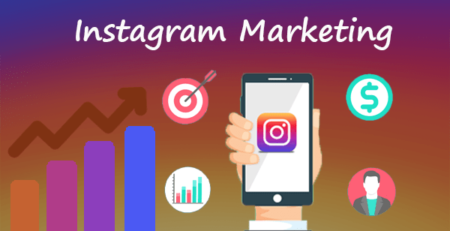Maximizing ROI: Proven PPC Strategies for Small Businesses
In today’s fast-paced digital marketplace, small businesses are constantly searching for effective ways to maximize their return on investment (ROI) through online advertising. Pay-Per-Click (PPC) advertising emerges as a potent tool in this quest, offering precise targeting, flexible budgets, and measurable results. This comprehensive guide dives deep into proven PPC strategies tailored for small businesses, aiming to boost visibility, drive targeted traffic, and enhance ROI.
Understanding PPC and Its Importance for Small Businesses
PPC advertising is a model where businesses pay a fee each time one of their ads is clicked. It’s a way of buying visits to your site, rather than attempting to earn those visits organically. For small businesses, PPC offers a unique advantage by leveling the playing field with larger competitors, providing the opportunity to reach potential customers at the moment they are searching for related products or services.
Strategic Keyword Selection: The Foundation of Successful PPC
The backbone of an effective PPC campaign is the strategic selection of keywords. These are the terms and phrases potential customers use when searching for products or services like yours.
- Long-Tail Keywords: Focus on long-tail keywords. These are longer, more specific phrases that visitors are likely to use when they’re closer to a point-of-purchase. They’re less competitive and more affordable, making them ideal for small businesses.
- Keyword Relevance: Ensure the keywords you select are highly relevant to the offerings of your business. This improves the quality of traffic and increases the chances of conversion.
Crafting Compelling Ad Copy: The Art of Attraction
Once you have your keywords, the next step is to craft ad copy that attracts clicks. Your ad copy should be concise, clear, and compelling, with a strong call to action.
- Highlight Unique Selling Propositions (USPs): Clearly communicate what makes your business stand out. Whether it’s free shipping, exceptional customer service, or a unique product feature, make sure it’s front and center.
- Emotional Triggers: Use language that evokes emotion or creates a sense of urgency. Phrases like “limited time offer” can motivate users to act.
Optimizing Landing Pages: Converting Clicks into Customers
A click on your ad is only the beginning. The landing page it leads to must convert that visitor into a lead or customer.
- Consistency: Ensure that the message and design of your landing page closely match the ad. This consistency reduces bounce rates and increases conversion chances.
- Simplicity and Clarity: Your landing page should be easy to navigate, with a clear and concise message. The call-to-action (CTA) should be obvious and enticing.
Leveraging Ad Extensions: Enhancing Ad Visibility and Information
Ad extensions expand your ad with additional information, giving people more reasons to choose your business. They can significantly improve your ad’s performance without additional costs.
- Sitelink Extensions: Provide links to specific pages on your site beneath your ad, like product categories or contact information, to help users find what they’re looking for more easily.
- Call Extensions: Include a phone number in your ad, making it easier for customers to get in touch directly from the search results.
Smart Bidding Strategies: Leveraging AI for Optimization
Modern PPC platforms offer smart bidding options that use machine learning to optimize your bids in real-time, focusing on maximizing conversions or conversion value.
- Target CPA (Cost Per Acquisition): This strategy adjusts bids to get as many conversions as possible at your target CPA.
- Maximize Conversions: Google Ads will automatically set bids to help get the most conversions for your campaign while spending your budget.
Regular Monitoring and Adjustments: The Key to Sustained Success
Continuous monitoring and tweaking of your PPC campaigns are crucial. Analyze performance metrics regularly to identify areas for improvement.
- A/B Testing: Regularly test different elements of your ads and landing pages, like headlines, descriptions, and CTAs, to see what works best.
- Adjust Bids: Monitor keyword performance and adjust bids accordingly to ensure you’re not overpaying for clicks and maximizing ROI.
Understanding Audience Targeting: Reaching the Right People
Beyond keywords, PPC platforms offer sophisticated targeting options based on demographics, interests, and behavior, allowing you to reach the right audience at the right time.
- Geotargeting: Tailor your ads to appear to users in specific locations, which is especially useful for local businesses.
- Device Targeting: Optimize your bids for different devices based on where your ads perform best, whether on mobile, desktop, or tablets.
Navigating the Competitive Landscape: Strategies for Standing Out
In competitive markets, standing out becomes even more crucial. Utilize PPC features that set your ads apart.
- Competitor Analysis: Keep an eye on your competitors’ strategies and adjust your campaigns accordingly. Tools like SEMrush and SpyFu can provide insights into their PPC tactics.
- Dynamic Search Ads: These ads automatically adapt to show relevant messages to users based on their search queries, making your ads more targeted and relevant.
Unlocking PPC’s Potential: Propel Your Small Business to New Heights
PPC advertising presents small businesses with a powerful avenue for escalating their online visibility, capturing targeted leads, and significantly boosting their return on investment. By adeptly navigating strategic keyword selection, creating irresistible ad copy, fine-tuning landing pages for peak conversion, harnessing the power of ad extensions, adopting smart bidding strategies, and diligently monitoring and tweaking campaign performance, small enterprises can unlock the full potential of PPC advertising. Success in the PPC realm demands continuous optimization and responsiveness to the ever-evolving digital marketing landscape. Embrace these strategies with commitment and precision, and watch your small business soar to unprecedented levels of growth and profitability.










